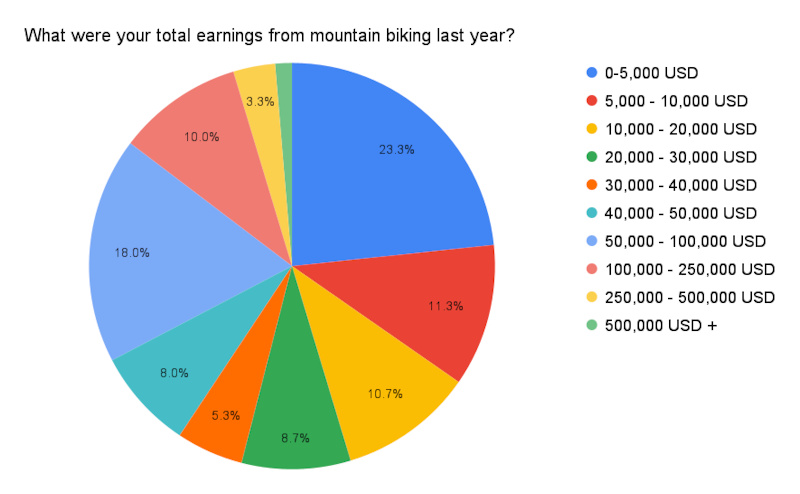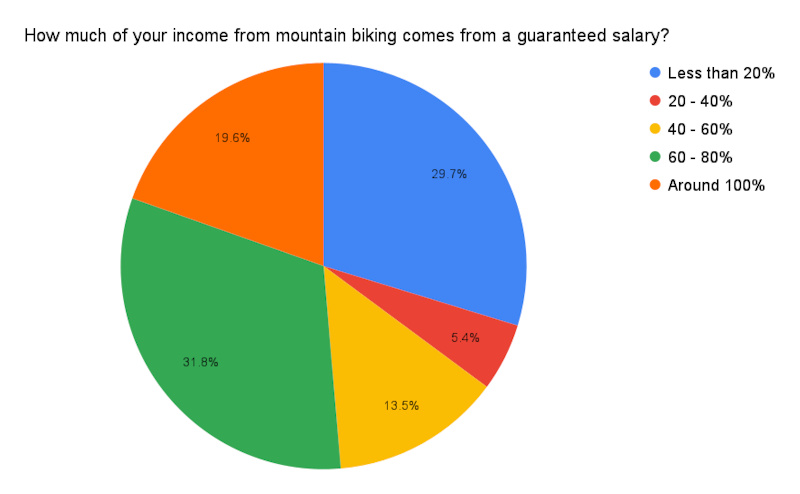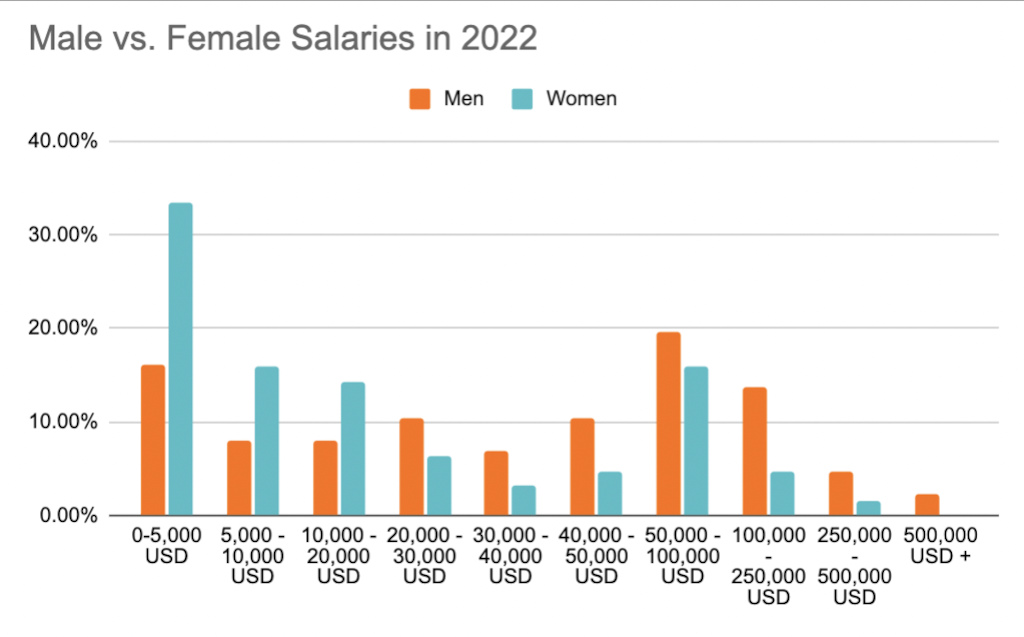Welcome to the 2023 Pinkbike State of the Sport Survey. This anonymous survey is designed to help shed light on key issues affecting the professional field and elite competition. We surveyed the best riders in the world to hear their thoughts, ideas, concerns, and criticisms on mountain biking as we go into 2023, all in an anonymous format. To read the introduction to the survey click here, and to see all the other currently published SOTS articles click here.
In some major sports such as soccer, Formula One, or even road cycling, athletes’ salaries are common knowledge and published annually. In mountain biking, athletes’ salaries are often shrouded in mystery. How much a rider gets paid can be an elusive number that is hard to decipher as a ‘salary’ is often a medley of bonuses, prize money and sponsorship fees.
To try and get a better picture of how much riders are earning, we included remuneration as a section of our State of the Sport survey.
Mountain Biker’s Salaries Vary Wildly
The largest group of riders surveyed (23.3%) revealed they earned just $0 – $5,000 USD per annum from mountain biking, with the second largest segment – 18% – making between $50,000 – $100,000 USD. We also know that 19.1% of riders don’t get paid at all.
67% of mountain bikers in our survey earn less than $50,000 USD per year, and for 55.3% of all riders, this makes up their full income (i.e., they do not have another job to support themselves). But how much of this income is dependent on results, sponsorships, and prize money?
Salaries Aren’t Guaranteed
Mountain bikers’ salaries often vary wildly from paycheck to paycheck. Most pro riders are entitled to some sort of base salary, but they are incentivized to increase their pay through other means. Of all the riders surveyed, just 19.6% were able to earn a full living from a concrete mountain biking salary, without having to supplement it with another income source.
Overall, 61.2% of riders stated that they relied on good race or event results for their livelihood. Another 29.7% told us that less than 20% of their income is guaranteed, and the majority of riders having approximately 60-80% of their income solidified from mountain biking. This means in total, over 80% of riders have to have a second income stream after their take-home salary (but for most riders, this income stream is still in the industry of mountain biking).
Possibly as a response to this financial instability, 28.5% of survey participants outwardly disagreed that the need to be aligned with a brand’s ethics and beliefs to accept sponsorship or support from said brand. 61.8% of participants believe that they must create content to maintain their income.
Despite the Financial Sacrifice, Most Athletes Think They are Paid Fairly
43.4% of riders believed they made sacrifices to their education to prioritize their riding and get to where they are now. 31.6% of riders said that they believe that they are paid unfairly, with the remaining 68.4% agreeing or remaining neutral to the statement that they are paid fairly for what they do. For some, being paid to ride your bike remains a dream job. Perhaps they may be willing to give up a higher salary in exchange for the lifestyle of a professional athlete.
For those who feel underpaid, lack of social media following was cited as the main reason, followed closely by poor contracts. 90.1% of riders believe that results are the main reason for a rider to be well paid, however only 8% think that lack of results are a reason for their own underpayment. Having a large social media following and inherent marketability (based on factors other than riding) were cited as the main reasons for riders to be well paid. 37.5% of riders also believe that the amount you earn has no reflection on how good a rider you are.
We asked our riders what they believe their sponsors value the most in an athlete, and the majority of them (57%) said that it was consistent results in their chosen discipline. A further 17.2% of riders said it was good one-off results in their chosen discipline. If there was ever an insight into how nerves can impact an athlete’s performance, this is it. Almost 75% of athletes will be trying to justify their wage in the start gate, and they generally have less than one opportunity per month to do so over the course of a year.
There Is a Gender Pay Gap in Mountain Biking, and the Women Know It
The data shows that a whopping 63.5% of professional women surveyed made less than $20,000 USD in earnings from mountain biking last year. 33% of those females made less than $5,000 USD, compared to just 16% of men. Over one-fifth of male athletes reported making over $100,000 USD, compared to just 6% of women. For the most part, female pro mountain bikers’ pay tops out at about $50,000 – $100,000 (only 4 reported earning over 100K), while some of the top paid men earned significantly more than that. This displays a much lower ceiling than the men’s category.
This won’t come as a surprise to the women; more than half the women surveyed responded ‘strongly agree’ to the statement ‘there is a gender pay gap in mountain biking.’ Another 30.8% responded ‘agree,’ putting the total agree answers to 83.1%. These women estimated that they make 30-50% less than their male counterparts, and the comparison chart above shows this to be relatively accurate.





